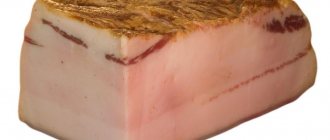Cheese cheese is a very ancient product, which began to be produced many thousands of years ago in the Arab East. Cheese cheese is made from sheep or goat milk. Nutritionists consider feta cheese one of the healthiest fermented milk products.
Compared to other cheeses, feta cheese has very little fat. A large amount of calcium has a beneficial effect on the skin and helps strengthen the musculoskeletal system. The lactobacilli contained in the product are necessary for good intestinal function. Due to its delicate and porous consistency, cheese must be stored in special conditions, but first, let's figure out what you need to pay attention to when purchasing a product.
How to understand that the cheese is not spoiled
When purchasing a product in a store, they usually rely on the shelf life indicated on the original packaging. If you purchase homemade cheese from your hands, it must be carefully inspected. How do you know if a product is of good quality?
- Pay attention to the color. It should be smooth and white.
- Lightly press the cheese with your fingers. The fresh product is moist to the touch, moderately soft and elastic.
- Ask the seller to cut off a small piece. Good quality cheese breaks, but does not crumble, and does not stick to the knife. The section shows multiple irregularly shaped pores and rare “eyes.”
- Smell the cut piece and taste it. Fresh cheese has a characteristic sour milk smell and salty taste.
Damaged goods and products whose shelf life is approaching the end show the following symptoms:
- crumbles or sticks to the knife when cutting;
- dry areas, yellow spots, cracks appeared on the surface;
- yellowish tint;
- bitter taste and unpleasant odor.
Spoiled cheese should not be eaten under any circumstances. This will lead to serious poisoning.
Tips for choosing in a store
The higher the quality of the cheese, the longer it is stored, so you need to know the rules for choosing a product:
- High-quality cheese has a white milky color, elastic and soft consistency, slightly brittle, but does not break up into lumps.
- When cut, its porosity is visible: many small holes of irregular shape.
- The packaging should not be swollen or deformed.
- The presence of sticky crumbs in the product is unacceptable.
- A crumbly consistency and dry areas indicate that the shelf life is coming to an end, which means that the beneficial properties of the cheese are minimal.
- It is recommended to buy cheese with the whey in which it was matured. Such goods are protected from premature damage.
- The price of a product that is too low should alert you. There is a high probability that low-quality raw materials were used.
You can get more detailed information about choosing cheese from the video:
Shelf life in the refrigerator
Like any cheese, after purchase the cheese is usually placed in the refrigerator. How long it will remain fresh there depends on a number of nuances.
Young cheese without brine remains usable for 2-7 days. The reason is that feta cheese does not have a hard crust, so bacteria from the outside easily penetrate into it.
Very quickly, within 2-3 days, the product will deteriorate in a plastic container. If you wrap it in cellophane, the effect will be even worse: the piece will “suffocate” and become tasteless.
Young cheese will stay fresh for up to 5 days if it is tightly packed in foil and placed in a pan (necessarily enameled) with a tight-fitting lid.
Fully ripened, salted cheese, wrapped in foil, will not spoil in the refrigerator for 2-3 weeks.
What is special about soft cheese?
Traditionally, feta cheese is made from sheep's milk, but now production also uses cow's and goat's milk. The composition includes lactic acid starter and calcium chloride.
The final stage of preparation is soaking the product in a saline solution. Brynza is a cheese with a short ripening period (from 5 to 15 days). Its salinity depends on the duration of soaking.
Compared to other cheeses, feta cheese has a more delicate consistency, which is why there are strict requirements for maintaining a high level of moisture in it.
Do you know that…
Drying of the cheese leads to damage to its taste.
Why do you need brine?
The shelf life of feta cheese increases significantly if it is kept in brine, that is, the brine in which it was ripened. According to GOST, it is one and a half months. The minimum shelf life is 2 weeks. If the cheese was sold in dry packaging, you can place it in a homemade brine. This is done like this:
- Dissolve 225 g of coarse salt in 3 liters of warm water. If desired, dry spices are added to the brine, for example: dill, pepper, caraway seeds, parsley, garlic.
- Pieces of cheese are placed in a clean glass jar and poured with the prepared mixture so that it completely covers the cheese.
- The jar is placed on the middle shelf of the refrigerator.
If there is a lot of cheese, after a month the brine for long-term storage of feta cheese should be drained and replaced with a new one of lower concentration (30 g of salt per 3 liters of water).
To remove excess salt from the cheese, soak it in cool water or milk for 5-10 minutes before serving.
The benefits and harms of fermented milk products
Brynza at home turns out just as tasty as from the store. To make it, you can take any milk - cow, goat, sheep and even buffalo. When prepared from store-bought milk in dairy factories, the cheese is aged for at least 2 months; homemade cheese can be eaten after 7-10 days.
Bryndza cheese is a source of milk protein, calcium, which strengthens bones and ligaments. Consumption 4-5 times a week improves intestinal function, eliminates bad breath, and normalizes acid-base and water-electrolyte balance. This product slows down aging, prevents the formation of the first wrinkles, improves joint mobility and increases muscle tone.
Having mastered the recipe for cooking at home, you will not only be confident in the safety of the product, but you will also be able to lose weight. A cheese breakfast blocks the feeling of hunger for a long time, which means you can avoid having an extra snack before lunch.
If you have diseases of the stomach, kidneys, hypertension, gall bladder and blood vessels, you can eat cheese, but it is better to limit yourself to a small piece - 20 g, no more than 2-3 times a week. This is due to increased salinity. To minimize harm, soak the cheese in boiling water or hot milk and boil for several minutes. But such methods will only help for homemade cheese, which has been kept in brine. If salt was added when introducing the starter, it is practically impossible to neutralize it.
Attention! Cheese cheese is not eaten before bedtime. After such a snack, it is difficult to get enough sleep - falling asleep is disrupted, nightmares occur
Despite the benefits of fermented milk product, it cannot replace kefir.
When do you need a freezer?
In cases where the shelf life of a product has expired and it is not possible to eat it completely, you can use the freezer. Pieces of cheese are tightly wrapped in cellophane or foil and then placed in a chamber. Cheese cheese cannot be frozen open or in brine.
In this form, the cheese can be stored for up to 8 months. But, it should be taken into account that it will not have its original aroma and taste after defrosting. In addition, it will lose elasticity and crumble. For these reasons, you should put cheese into the freezer only as a last resort.
Thawed brine cheese is only suitable for preparing pasta, khachapuri, pizza and other dishes.
Enzymes for homemade feta cheese
For feta cheese, it is permissible to use the following brands of microbial enzymes:
- MEITO MICROBIAL RENNET is the most popular enzyme extracted from edible mushroom;
- Fungal chymosin, obtained during the fermentation of molds;
- SUPAREN is isolated from ascomycete parasitic fungi;
- MILASE – raw materials from modified mushrooms;
- MAXILACT is obtained by fermentation from milk mushrooms;
- CHY-MAX – from the mold fungus Aspergillus;
- CHYMOGEN FROMASE – from a mold fungus of the genus Mukor Miehei;
- MAXIREN is the result of fermentation of dairy yeast.
When choosing microbacterial starters, you should pay attention to the mesophilic group, since these are the additives that are used in the production of brine and soft cheeses at low cheese-making temperatures (not higher than 40°C)
If there is no refrigerator
Sometimes you want to buy a product, for example, while traveling or going to the country, but you don’t have a refrigerator at hand. Will the cheese be stored outdoors? Not for long, but yes. At air temperatures from +18 to 24° the cheese will not spoil:
- in original sealed packaging – 1 day;
- in a glass jar with brine – 2 days;
- in dry form with the packaging opened – from 6 to 8 hours.
It should be understood that direct sunlight and stuffiness will make these times even shorter. Therefore, in order to protect the product from spoilage in the open air, you need to find a dark place for it in a well-ventilated area.
Thus, the correctly chosen method of storing cheese is the key to its freshness for the maximum period.
Milk replenishment
Cheese cheese is a salty product, so it is consumed after preliminary soaking. An excess of salt in the body leads to swelling and fluid stagnation. To make the product less salty, it is pre-soaked. The procedure lasts 2-3 hours. Milk is used for this. After soaking, the cheese will not lose its original taste and aroma, but the pronounced saltiness will disappear.
See also
Timing and methods of how to properly store potatoes for the winter in an apartment and cellar
Before soaking, the cheese is cut into slices 3 cm thick. The pieces are left in milk, then tasted. If it has not changed, the milk is replaced with fresh milk and left for further soaking until the salt is gone. The soaked cheese is placed on a shelf in the refrigerator; it is not recommended to leave it at room temperature.
Alternative recipe
An alternative option is considered universal, as it is suitable for almost all pickled cheeses.
What ingredients will you need?
To create an alternative brine you will need:
- salt without iodine – 200 g;
- light sugar. Dark product is not used – 100 g.
The listed proportions of products must be dissolved in 1.5 liters of clean water.
Step-by-step cooking process
The recipe for preparing alternative brine includes the following steps:
- Pour water into the prepared container and dissolve sugar and salt in it.
- Place the container on the fire and bring the brine to a boil.
- After the brine reaches 100 °C, remove the container from the heat.
When the brine reaches a temperature of 20-25°C, it can be used for aging or storing cheese.
Is it possible to freeze hard cheese?
Cheese can be frozen in the freezer. Grated cheeses are best frozen. ... As for hard cheeses, such as Parmesan, cheddar, etc., you should not freeze them, since they can easily remain in the refrigerator for a couple of months.
Interesting materials:
In what year was the children's helpline founded in Russia? In what year was the city of Mariupol founded? In what year was the city of Stavropol founded? In what year was the Jesuit order founded? In what year was Tselinograd founded? In what year was the magazine Funny Pictures founded? In what year was the sea route to India opened? In what year was income tax abolished? In what year was Zhdanov renamed to Mariupol? In what year was the first World Hockey Championship?
Salting methods
Some unusual ways to pickle cheese can be quite unusual. The taste of the product depends on them.
Long-term storage method for cheese
Of course, if feta cheese was purchased in a store in small quantities with the prospect of being consumed in the near future, then there is no point in using any special storage methods: after all, in a refrigerator, this fermented milk product does not lose its beneficial qualities for several days.
If it is assumed that the storage of cheese will be longer, then this method will not be enough. In this case, special conditions will have to be created to preserve the freshness of the product.
The most obvious and simple way to store feta cheese is immersed in brine.
The high concentration of salt in the liquid used to make cheese helps maintain the freshness of this fermented milk product for a long time. If you store cheese in the brine in which it was prepared, then you can be sure that it will not change its original taste. Some manufacturers sell cheese directly with brine. In these cases, storing cheese is easiest. In such conditions, it will not lose its qualities for several weeks.
Common mistakes in storing cheese
Those who do not rely on the existing experience of other people when storing cheese risk creating the wrong conditions for this product. Such a mistake can lead to spoilage of the cheese. In extreme cases, it can even become completely unusable.
One of the most common mistakes is storing cheese in boiled water. This is usually done by people who are afraid that the taste of the product will become much saltier during storage. The method is ineffective, since water does not protect against microorganisms, and in addition, it contributes to the leaching of salt from the cheese, which leads to a deterioration in the taste of the product.
Soaking feta cheese in boiled water is allowed immediately before consumption in cases where its taste is excessively salty.
When storing without brine, many people mistakenly believe that it is enough to wrap a wheel of cheese in film. In fact, a piece of cheese wrapped in film should be placed in a saucepan and covered with a lid. This is extremely important, since it is in this case that the optimal level of humidity for storing cheese is created in the container, and the cheese will not go stale.
It would also be a mistake to store cheese in a plastic or metal container without an enamel coating. Storing in the wrong container can lead to distortion and deterioration in the taste of the cheese.
What kind of cheese is there?
There are these types of cheese:
:
Sheep
, it has a characteristic smell, crumbly, granular.
Cow's is more tender in taste than sheep's. ... There is also goat
, it differs in density and smell, its color can be from light cream to white.
Interesting materials:
What is PATA? What is pci express x16? What is a PCI bus? What is a pci slot? What is PCM in a car? What is pcm? What is PE in clothing? What is MIDI transmission? What is flashing a tablet? What is recycled wool?











